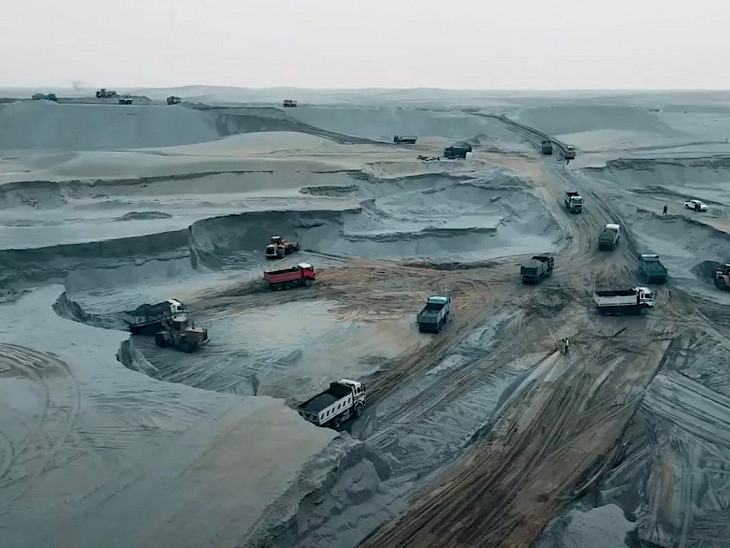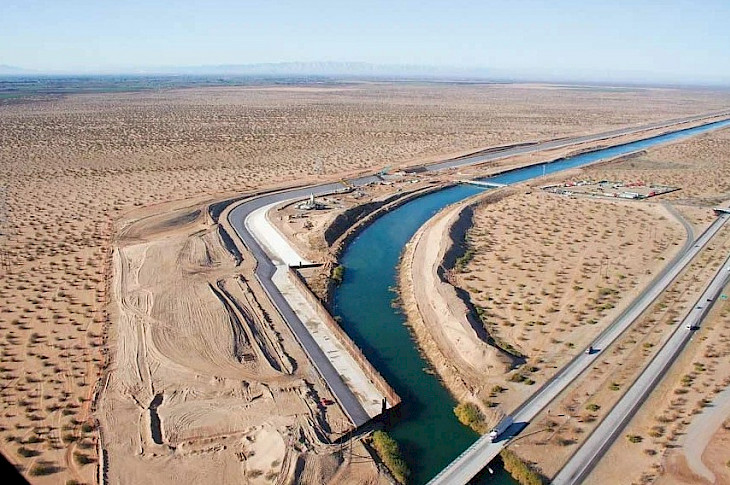
Taliban regime has completed the first stage of construction of the canal and moved on to the second phase
Sindh Courier Monitoring Desk
Back on October 11, the Taliban completed the first stage of construction of the Kushtepa (Also spelt as Qosh Tepa) canal and moved on to the second phase of the project. A delegation of senior officials said that Afghanistan will achieve self-sufficiency in grain cultivation by irrigating the land with water from the Kushtepa canal, which will be obtained from the Amu Darya.
Afghanistan has every right to dispose of water from the Amu Darya, the message said.
The Taliban also added that their intelligence agencies and army are ready to respond if neighboring countries try to obstruct the construction of the project.
The Afghan government tried to reassure Uzbekistan, saying that the problems that had arisen could be resolved diplomatically. However, not only Uzbekistan, but the entire world community is very concerned about this project, Uzbek media organization Nova24.uz reports.
Construction of the facility began in March 2022. Its length will be 285 km, width 100 m and depth 8.5 m. The project will cost $684 million, which was allocated from Afghan government funds.
Claiming its right to draw water from Amu River, Taliban warned that their intelligence agencies and army are ready to respond if neighboring countries tried to obstruct the construction of the project.
According to forecasts of the Eurasian Development Bank, the expected water intake from Pyanj by the Kushtepa canal in the amount of up to 10 km3 affects the interests of Turkmenistan and Uzbekistan. As a result of such a large-scale withdrawal of water in the upper reaches of the Pyanj in the middle and lower reaches of the Amu Darya, even in years with normal water availability, an unrecoverable water deficit will arise, which will cause water stress for all sectors of the economy of these countries. The characteristic long periods of low water, causing the complexity of water supply, may become even more aggravated with the completion of project construction.
The stated purpose of the canal construction is to irrigate 3 million jerib of land (1 jerib – 2,000 sq. m) in the provinces of Balkh, Jawzjan and Faryab and provide employment to about 250 thousand people. The Taliban want to complete the project by 2028, but experts are already having concerns.
Afghan engineer Najibullah Sadid doubted the Taliban’s ability to manage complex engineering work due to the canal’s dirt bed, which causes large water losses. He also added that the Taliban are in a hurry to complete the simplest stage of construction.
Moscow State University scientists practically call this project a disaster for Central Asia. They say Uzbekistan and Turkmenistan could lose up to 15% of irrigation water from the region’s main river. In addition, the matter will not end with the Kushtepa canal: it is planned to build the Dasht-i-Jun hydroelectric complex, which can accumulate most of the summer flow of the Pyanj River. Thus, the Taliban are going to take the lion’s share of water from the northern transboundary rivers.
The implementation of these two projects, according to experts, could entail not only economic and social problems in Uzbekistan and Turkmenistan, but also an environmental disaster throughout Central Asia.
Uzbekistan to introduce emergency regime to save water
Meanwhile, President of Uzbekistan Shavkat Mirziyoyev has announced that 2024 will be a period of transitioning to an emergency mode for water conservation. The country’s economy is seriously affected due to the irrational use of water, Asiaplustj.info reports.
Only 20% of water resources are generated within Uzbekistan, with the rest coming from neighboring countries. The situation is exacerbated by difficulties in managing transboundary sources and their reduction due to climate change, emphasized President Mirziyoyev.
 Approximately $1 billion is spent annually on water management expenses in Uzbekistan. However, water is used inefficiently. For example, irrigating one hectare of cotton fields consumes 10-11 cubic meters per year, while in countries with a similar climate and soil, the consumption is two to three times less due to resource management.
Approximately $1 billion is spent annually on water management expenses in Uzbekistan. However, water is used inefficiently. For example, irrigating one hectare of cotton fields consumes 10-11 cubic meters per year, while in countries with a similar climate and soil, the consumption is two to three times less due to resource management.
As a result of water losses, the Uzbekistan economy loses $5 billion per year.
Experts predict that by 2030, Uzbekistan’s water shortage could reach 15 billion cubic meters.
In this regard, Mirziyoyev outlined several top-priority tasks aimed at improving the efficiency of natural resource use.
The most important task is to ensure a breakthrough in the concreting of canals, according to Mirziyoyev. Corresponding works in the coming year will affect 1500 km, which is four times more than the current year. By 2025, it is planned to concrete about 2000 km of canals. Since the most optimal time for such work is considered the period from November to March, local authorities have been instructed to start building new irrigation systems now.
Another important task is the implementation of water-saving technologies. President of Uzbekistan noted that only 30% of the 4.3 million hectares of irrigated areas apply innovations that allow resource savings. Such farms also experience a reduction in fertilizer and fuel consumption and an increase in crop yields.
In several regions of Uzbekistan, such as Kashkadarya, Samarkand, and Tashkent, the situation is close to catastrophic. According to Mirziyoyev, almost no laser leveling of land is carried out here—the simplest agrotechnical measure that contributes to water savings.
The main reason is the inefficient financing mechanism for farmers. In this regard, a new scheme has been proposed. Clusters and farms wishing to implement water-saving technologies will be able to take a five-year loan with a two-year grace period at 14% per annum. Moreover, the contract with the bank will be concluded online.
Another important task is to reduce water delivery costs. Currently, a cubic meter of water delivered to fields costs an average of 212 sums, although in Bukhara, Namangan, and Kashkadarya, it is more expensive by two to three times. In addition, 80% of pumping stations have high energy consumption due to outdated equipment. To address the issue, Mirziyoyev suggested organizing the process of modernizing these irrigation facilities with the involvement of private partners.
Mirziyoyev added that several projects are already being implemented in Uzbekistan. In the future, it is planned to upgrade 95 stations, put another 118 up for open tender, and possibly transfer them to the management of foreign companies.
__________________
Courtesy: Central Asian Light